Colostrum before menstruation may appear due to hormonal changes in a woman’s body. Taking contraceptives can often provoke such a phenomenon. But as a rule, colostrum appears during pregnancy. If the test showed a negative result, then it's time to donate blood for analysis of prolactin.
For several days, and even a week before menstruation, many female representatives notice discomfort in the mammary glands. The chest increases, becomes more elastic, there is increased sensitivity, sometimes even soreness. From the mammary glands may begin to stand out sticky yellowish liquid - colostrum. But there is one important moment. Colostrum may appear before menstruation with hormonal disorders or as a signal of diseases of the mammary glands. In this case, it is important to immediately consult a doctor.
In pregnancy early terms This is a natural change, which indicates that the woman's body begins preparing for breastfeeding the future baby.
Pregnancy
The ducts of healthy mammary glands in their usual condition are no larger than peas. When pregnancy occurs, they can increase several times. Inexperienced young women can even scare this phenomenon. Due to the changes in the breast under the action of hormones, the expectant mother already has a discharge of white or yellowish nipples in a month.
Very often, pregnant women can discuss among themselves the topic of the timing of the appearance of colostrum, but this phenomenon, as noted by doctors, is strictly individual.
Galactorrhea
Galactorrhea is the release of colostrum after the lactation period. The woman no longer feeds her baby with milk, but the white liquid continues to appear from the breast even after 3-5 months after the end of feeding. In such a situation, you must visit a doctor.
Causes of prolonged galactorrhea may be as follows:
- disorders of the thyroid gland;
- ovarian dysfunction;
- adverse reactions to taking oral contraceptives or other drugs;
- use of decoctions of some herbs;
- wrong close bra;
- breast growth or injury;
- renal or hepatic failure.
Normal galactorrhea, in contrast to the pathological one, is distinguished by its “correct” duration. It continues until six months after the termination breastfeeding. And then the emerging symptom of galactorrhea in the form of colostrum may indicate problems.
Mastopathy
With a disease like mastopathy, discharge from the chest can also be noted. However, this fluid is not colostrum and appears spontaneously, perhaps even if the woman does not touch her breast.
Milky Way Ectasia
With this disease, the milk ducts are rapidly and extensively expanded, which is accompanied by an inflammatory process. The liquid released from the breast does not look like colostrum at all. It is thick and brown. Most often, ectasia of the milky ways appears in women of climax age. Treatment is prescribed strictly by a doctor.
Such tumors refer to benign. Papilloma can occur and develops inside the mammary gland duct. Neoplasms tend to grow and fill the entire intraductal space. 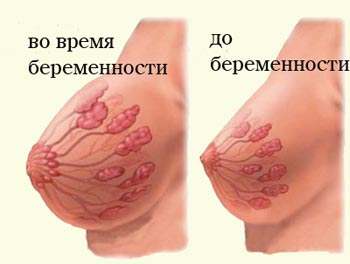
Almost always indicate such a problem, if it is not the consequences of injury. In addition to the scarlet secretions, at the initial stage of the pathology one can observe the release of a liquid resembling colostrum. Depending on the degree of damage to the breast fluid changes its color.
Mastitis
Such an acute disease of the mammary gland is infectious. Most often it occurs during breastfeeding. The mammary gland swells up, becomes very painful when touched, as a rule, the body temperature rises to 39 degrees. A greenish liquid with purulent impurities is released from the chest.
Mastitis can occur due to personal hygiene, infection caused by infection in nipple cracks, or improper expression of milk. Seeking a doctor in such a case should not be postponed in any way.
Chest injury
With a strong blow or other injuries glands may be observed discharge with blood. When healing occurs, the liquid becomes yellowish and then becomes transparent. With full recovery, discharge from the chest disappears altogether.
Malignant tumors
With the formation of a malignant tumor, there is no difference in distinguishing characteristic secretions from colostrum. They are always dark in color and at the same time the nipple is retracting. The chest becomes inflamed and unhealthy. In the armpits, the lymph nodes are enlarged and sore. The disease requires immediate medical attention.
Diagnosis of breast problems
First of all, you should regularly independently examine each breast by the method of palpation and squeezing of the nipples. A healthy chest is almost uniform to the touch, without any seals and pain.
When you click on the nipples, no liquid should appear.
Self-examination should be carried out approximately on the tenth day after the onset of menstruation. At this time, the chest no longer reacts painfully to touch, and the tissues come to their normal state, they are easy to probe.
Medical examinations may include thermography and mammography. Usually, doctors resort to it if they suspect a breach in the breast. A mammologist should also conduct a prophylactic examination every six months or a year by the method of palpation. 
What signals indicate the need for a visit to the doctor
Initial symptoms that require special attention and consultation with a doctor are, of course, pain in the mammary glands and discharge from the nipples. Could this be some kind of disease? Naturally, there are situations when pain sensations - This is a common thing, for example:
- pregnancy;
- premenstrual syndrome (hormonal changes);
- lactation;
- active growth of the mammary glands (adolescence).
But pain that is not associated with the above events, should alarm any woman. If the body temperature has risen, and the chest has become an unhealthy color, it is necessary to urgently consult a doctor. Discharge from the nipples when they should not occur, and even a strange color is also a significant reason for a visit to a specialist. If suddenly the breast has swelled or, on the contrary, has become wrinkled, the nipple has acquired an unusual color or shape, this is not just so.
It is important to realize that any unusual changes in the chest are a serious reason for a medical examination.
It is better to find out about the problem right away, rather than wait until it reaches a large scale, and radical measures will be needed to treat the disease. If the primary symptoms of the disease appear, do not wait for complications. On early stages development of diseases to cure them is always easier and faster.
We recommend related articlesDuring pregnancy, did you notice a thick / viscous / sticky consistency of a yellowish, transparent or creamy hue from the chest - is this normal or pathological? Immediately we will hasten to calm you down - it is allocated colostrum - an absolutely normal and safe phenomenon. If during the entire pregnancy you do not have colostrum, it is also quite normal.
What is it?
Colostrum — it is a thick, viscous, sticky liquid of yellowish, transparent or creamy hue, which has a specific odor and tastes slightly sweetish, which the mammary glands of a woman emit during gestation and feeding of the child. The production of colostrum in the mammary glands is a normal physiological process. It is usually released in women in the first two or three days after the birth of the child. But colostrum can also be released at different stages of the expectant mother’s pregnancy.. Colostrum is also called "immature milk", since it precedes the appearance of the present breast milk. Colostrum differs from milk also in its composition: it has less fat and sugar, but more protein.
it looks like colostrum
What is useful?
Colostrum is very useful for the baby in the first days of his birth. It is saturated with antibodies that protect the infant from infections and contribute to its rapid adaptation to the outside world. It contains all the nutrients needed child's body for normal life.
Chemical composition of colostrum: albumin and globulins - proteins (up to 6-7%); water (84-88%); bifidumbacteria; lactobacillus; vitamins of groups A, B, C, E, PP; milk sugar (lactose) - carbohydrates (up to 5-5.5%); fats (4-5%); mineral salts; food enzymes (amylase, lipase and protease); hormones.
Colostrum is more caloric than the milk itself, and contains less water. Despite this, it is easily absorbed by the body that just appeared and prepares the baby’s digestive system for assimilating heavier foods - real breast milk (). The first food of a newborn - colostrum - has a laxative effect, which provides an easy release of intestines from feces. Colostrum helps to eliminate bilirubin, thereby reducing the risk of occurrence.
Colostrum during pregnancy
At a time when the baby grows and develops in the womb, the organism of the future mother is preparing to feed her child throughout the nine months. At the very beginning of pregnancy, the mammary glands begin to swell, and women can feel light pain. Changes occur at the hormonal level, which leads to the production of colostrum.
When does it appear?
As for the timing of the appearance of colostrum, there is no definite answer. The production of milk fluid begins from the moment of conception, although a woman in the first trimester may not feel it. But more actively immature milk is produced by the body in the second trimester. Externally, this may manifest itself in the form of yellowish sticky droplets that remain on clothing. Two months before delivery, the color of colostrum becomes more transparent, but the amount usually does not increase. And even if future mom will not detect drops of immature milk until the moment of delivery, then there is nothing dangerous in it either. Anyway, it is produced in the body: this process is laid by mother nature.
In some cases, the woman is faced with the appearance of colostrum even at the initial stages of pregnancy. Doctors do not see in the early discharge of immature milk any threat to either mother or baby. Do not be afraid of a slight itching and tingling around the nipples, which can accompany the release of colostrum.
What stimulates the appearance of colostrum?
The following factors contribute to the release of colostrum during pregnancy:
- a surge of emotions (positive and negative);
- prolonged sexual intercourse;
- taking a hot shower;
- breast massage;
- gri high temperature air, especially in summer;
- drinking hot tea or other drinks.
Deviations from the norm
So, the release of colostrum at any stage of pregnancy is a completely normal process occurring in the future mother's body. However, a woman, having noticed a similar phenomenon in herself, should focus on such moments as:
- The color of colostrum. Normally, it should be saturated creamy hue, then, closer to childbirth, it becomes more transparent. If small particles of blood are mixed with the liquid, then you should be alert, but do not panic. The presence of blood can be as a variant of the norm, and to signal any disease. It is necessary to consult specialists (mammologist, surgeon, oncologist) and a detailed examination of the body (ultrasound of the mammary glands, MRI, mammography, etc.).
- The amount of colostrum. Usually a little liquid is released, although this process, like the whole pregnancy, is manifested individually. If a woman feels that there is too much excreted fluid, a consultation with a mammologist will not be superfluous. It is worth knowing that increased chest rush during pregnancy leads to an increase in the level of the hormone oxytocin. And this is fraught with an increase in the tone of the uterus, which is dangerous and leads to the threat of miscarriage. But, perhaps, intensive production of colostrum is associated with the factors described above. Stress, enhanced massage, hot shower stimulate the process of excretion of milk fluid.
- Offensive odor and impurities of pus in colostrum. Such a symptom may indicate the presence of a bacterial infection in the ducts of the mammary glands. In this case, the future mother may increase body temperature and deteriorate the general state of health. Seek medical attention and treatment should be prompt to reduce the risk of infection of the fetus.
- Chest discomfort. A slight tingling and slight itching that accompany the release of colostrum is normal. But if a woman feels severe pain or notices hollows and bumps on the mammary glands, then she needs to immediately tell the doctor about it. The presence of accompanying pain in the lower back and lower abdomen is also a bad sign. Such symptoms can lead to spontaneous miscarriage or premature labor. You should not wait for such a terrible situation, it is better to go to a medical facility in time.
Colostrum in non-pregnant women
Colostrum can be produced not only during pregnancy and lactation, but also after the completion of the infant feeding period for 1 to 2 years. The sudden appearance of colostrum, not related to pregnancy and the recent feeding of a baby, may mean that the hormone levels, oxytocin and prolactin, have increased in the woman’s body. And here you should not wait and think for a long time: you should immediately run to the doctor-mammologist. What can signal the unexpected appearance of colostrum in the mammary glands?
- hormonal failure in the body;
- (in this case pus is secreted);
- fibroadenoma and other tumors.
Important: In the case of contraceptive intake, some women will have occasional release of colostrum before the start of the menstrual cycle. However, it is necessary to pass a blood test and make sure that there are no diseases.
Hygiene rules in the period of colostrum
The presence of colostrum causes a woman to more carefully care for their breasts. After all, this sweetish liquid contributes to the formation of a favorable environment for the emergence and active reproduction of bacteria. That is why the expectant mother should pay special attention to body hygiene and follow simple rules:
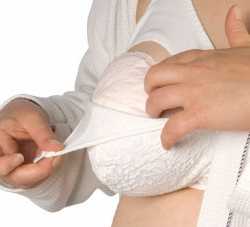
Important: Failure to follow these rules can lead to inflammation of the ducts in the mammary glands.
Remember that original milk is very valuable for your baby. Apply the newborn to the breast as often as possible so that he receives the necessary supply of nutrients and is as protected as possible from outside influences. Especially important is the feeding in the first hour of the birth of the baby (). The ideal duration of the feeding period in the first days is 20 minutes. Frequent attachment to the breast will not only help the baby, but will stimulate the lactation function of the mammary glands in the mother. Colostrum is the health of your baby.
The appearance of colostrum. From obstetrician-gynecologist with 30 years experience
Discharge from the nipples - this is an unusual phenomenon for women, which can be alarming and frightening, if they do not breastfeed the baby. But, to respond in this way is not worth it in all cases. Sometimes colostrum is a common occurrence, and in some cases a very disturbing signal.
In this article you will find useful information about what to do if you find yourself in such a selection. And, the situation will be considered in three cases - if you are pregnant, if you are not pregnant, and if you have just got a baby.
Many changes can occur in the body during pregnancy.. An increase in the size of the abdomen area, breast augmentation - these are standard phenomena that will haunt all nine months of pregnancy. But, for example, pigmentation and acne are phenomena that bypass some pregnant women. These include colostrum. It does not have to stand out from every pregnant woman, because any organism is individual.
In cases where discharge from the nipples are accompanied by unpleasant symptoms or have a specific structure, you should consult a doctor. Here are the phenomena that need special attention:
- Temperature rise;
- Chest pain;
- Pain in the abdomen;
- Bloody vaginal discharge;
- Asymmetry of the breast or the occurrence of seals;
- Purulent colostrum;
- Unpleasant smell of discharge.
What color is colostrum during pregnancy?
Its standard color is yellow translucent.. In the third trimester, it may be brighter and more transparent or look like milk.
At the end of pregnancy can be normal and chest discharge with blood. But this is not always the norm, and in order to avoid unpleasant consequences, you need to go for a visit to a doctor.
When colostrum occurs during pregnancy
 During pregnancy, colostrum can begin to stand out at almost any time. There are no specific deadlines indicating that it will soon begin to stand out from the chest. This phenomenon may occur in the third trimester, in the second or even in the first. But, usually pregnant women notice colostrum at the end of pregnancy, and this is about with.
During pregnancy, colostrum can begin to stand out at almost any time. There are no specific deadlines indicating that it will soon begin to stand out from the chest. This phenomenon may occur in the third trimester, in the second or even in the first. But, usually pregnant women notice colostrum at the end of pregnancy, and this is about with.
Do not worry when his appearance will be combined with a slight tingling or even a slight itching in the chest.
Colostrum in early pregnancy
Given that it, in most cases, accompanies women who are already preparing for childbirth, women who have just learned about pregnancy panic when they see droplets of fluid on their nipples.
There are no reasons for panic, because colostrum can be detected after a couple of weeks after conception.. In addition, several factors contribute to its appearance and active release:
- Contact with hot air and hot water (visit to the bath or sauna);
- Impact on the chest (massage);
- Intimacy;
- Orgasm (even without penetration of the penis into the vagina);
- Temperature rise.
Can colostrum be released without pregnancy?
Usually, such a question is asked by those who encounter it with premenstrual syndrome. AND, the answer is simple - most likely a sign of pregnancy. There are other reasons for this discharge:
- The development of pathology with hormonal imbalance;
- Intraductal papilloma;
- Mastitis;
- Ectasia ducts;
- Fibroadenoma;
- Hematoma due to injury.
If the pregnancy is not detected, and the cause of the chest discharge is any of the above, you should not postpone the visit to the doctor.
![]() As a rule, it replaces milk several days after delivery. Therefore, if you instead of milk reappeared colostrum, it makes no sense to worry.
As a rule, it replaces milk several days after delivery. Therefore, if you instead of milk reappeared colostrum, it makes no sense to worry.
In such a liquid contains many components that can saturate the newborn. And, it tastes good to him. We can say that in terms of the amount of useful substances it has a significant advantage over milk. It contains:
- Milk bodies;
- Squirrels;
- Milk balls;
- Minerals;
- Vitamins C, A, B, E;
- Carbohydrates;
- Antibodies;
- Fat
Why it is not recommended to express and squeeze colostrum during pregnancy
Starching colostrum is a dangerous and pointless exercise.. Such a liquid does not pose any danger and does not cause much inconvenience, therefore, it is not necessary to get rid of it.
But, there are several reasons that indicate the danger of such pumping:
- If you strongly affect the chest with your hands during pregnancy, the body will increase oxytocin - a substance that contributes to the reduction of the uterus and leads to its tone. And such phenomena are provocateurs of premature labor and miscarriages.
- If you often touch the nipplesIf there is a risk of infection in the body. And it can be very dangerous, especially for pregnant women.
- The more to withdraw from the breast of colostrum by decanting, the more the body will develop it. And his active development will aggravate the situation.
How to care for breasts during periods of colostrum
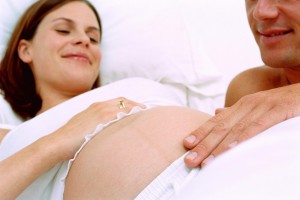 The main rule in the care - the selection of suitable linen. Bra must be a little free, but well-kept breasts. It is better to avoid laces and decorative elements. It is desirable that it was made from natural breathable fabrics and had a soft lining.
The main rule in the care - the selection of suitable linen. Bra must be a little free, but well-kept breasts. It is better to avoid laces and decorative elements. It is desirable that it was made from natural breathable fabrics and had a soft lining.
If the bra is wet, it should be replaced immediately. Humidity is a great environment for the development of bacteria. Therefore, underwear should be dry.
In cases where there is a lot of discharge, you need to get special pads for the chest. They should be placed in a bra and monitor the extent of their wet. If they become wet, it is advisable to replace them as soon as possible.
Wash chest should be warm water at least twice a day. It is not necessary to use detergents. After bathing, be sure to wipe the chest with a towel with light movements, so that the moisture on it does not remain.
Discharge from the chest before the onset of menstruation does not always indicate pregnancy or the presence of any irregularities. Often this phenomenon has a physiological nature and is associated with the individual characteristics of the functioning of the hormonal system of the female body. However, in some cases, the secretion of secretion from the mammary glands may indicate the development of pathological changes.
What is considered normal
The so-called colostrum can appear in early pregnancy, when a woman does not yet know about her position, but is awaiting the arrival of another menstruation. In this case, the allocation associated with dramatic hormonal changes that occur immediately after conception. They do not always appear, in most women, colostrum begins to stand out only in late periods or after birth. Along with the formation of a secret, other characteristic manifestations are usually observed in early pregnancy: breast augmentation, darkening of the nipples and areola.
Also, prolonged discharge from the mammary glands is considered normal in the period after the end of breastfeeding.
Pathological secretions
Discharge from the chest shortly before menstruation can be caused by increased activity of the hormonal system. They look like clear, yellowish or whitish drops and come out in small quantities. Their appearance can be triggered by the use of hormonal drugs, such as contraceptives.
Sometimes excessive hormonal activity is a temporary phenomenon that stops on its own, but such violations do not go without a trace for women's health. In addition, a hormonal imbalance may be the result of a serious disease affecting the organs of the endocrine or reproductive system.
Other causes of secretion from the mammary glands are dishormonal and inflammatory diseases, benign and malignant tumor pathologies. Common disorders are mastitis, galactorrhea, fibroadenoma, ectasia of the milk ducts, intraductal papilloma. Also unnatural discharge causes trauma to the chest.
Inflammatory diseases and injuries can provoke an infectious process in the tissues of the mammary glands. As a result, pathological fluid accumulates from the nipples in the ducts.
Breast fibroadenoma is a benign tumor that develops due to the increased activity of sex hormones. The fluid in this pathology is released before menstruation or in the middle of the cycle.
In galactorrhea in women, there is an excessive synthesis of the hormone prolactin, which is responsible for the production of breast milk. The causes of this disorder may be thyroid disease, pathology of the pituitary, hormonal drugs.
The release of fluid occurs and the development of dangerous cancer. In such cases, the fluid often has blood impurities, and the woman has additional symptoms, such as nipple deformity, itching and peeling of the skin in the areola area.
Noticing the discharge from the breast, it is necessary to pay attention to their nature - color, texture, amount of fluid, exactly how it comes out (spontaneously or only when you press the chest), whether drops are often released from one breast or both. It is also important to note whether there are any additional symptoms - pains or lumps in the chest, fever, headaches or general weakness. All this information will need to be voiced at the doctor's office.
If you find a discharge from the mammary glands that are not related to pregnancy, be sure to get tested by a breast doctor. It is especially important to do this as soon as possible, if the secreted secret has an unusual color, smell or texture. Perhaps the reason for this incomprehensible manifestation is associated with the natural processes occurring in the body or with its reaction to the medications taken. In any case, the exact answer will be given only by the doctor, therefore one should not ignore the incomprehensible symptom.
Pregnancy is the most beautiful time in a woman's life. But often the expectant mother is faced with processes that can not independently explain. One of such examples is colostrum in pregnant women. When this fluid appears and what it is, this article will tell.
How do the mammary glands change?
With the onset of pregnancy, the female body begins to rebuild. First, the uterus increases. This process is accompanied by frequent urination, especially at night. Does not remain unchanged and the chest of a woman. becoming larger, there may be heaviness and discomfort in the chest.
The milky ducts, which before pregnancy resemble a pea, increase to the size of a walnut. Sometimes it scares the girls, and they immediately go for a consultation with a doctor.
One of the most common occurrences is colostrum in pregnant women. When it appears and how it is caused, you need to learn from the obstetrician-gynecologist. But you should immediately make a reservation that there are no exact dates - it all depends on the individual characteristics of the organism.
Allowable amplitude
Arriving at the clinic, the girls in the position want to get information about when there is colostrum in pregnant women, at what time it occurs. Doctors claim that they can occur in any trimester - this moment depends on the sensitivity of the mammary glands and the degree of preparation of the body for childbirth. If this happens, do not be afraid and invent many non-existent diseases. Wet bra - a familiar phenomenon for girls in an interesting position.
Statistics show that colostrum tends to be released in the third trimester when the breast is ready for lactation. This process starts with the 32-33rd week. Usually, it is accompanied by unpleasant sensations: slight tingling and slight itching are permissible.

Colostrum - maternal nectar
When colostrum occurs in pregnant women, girls immediately rush to report this to the gynecologist. Interestingly, experts still can not determine the exact composition of the released fluid - it is so complex and rich.
In many women, the composition of milk and colostrum may vary. Color varies from white to pale yellow.
The composition of this fluid is approximately the following:
- Leukocytes.
- Milk discharge (balls).
- Colostrum calf.
The excreted fluid is very high in calories and rich in vitamins. Therefore, it is important to put the baby to the breast until the moment milk arrives. It is proved that even a few drops of colostrum are able to fully feed the crumbs. Calorie content is approximately as follows:
- The first day after birth is 170 kcal.
- The second - 140 kcal.
- Third - 90 kcal.
Nature has presented mankind with a unique gift - colostrum in pregnant women. When this fluid appears, the gynecologist will certainly explain. The only thing he doesn’t say is about exact dates. But the fact that this phenomenon is normal and necessary, the doctor will say for sure.
Why can colostrum appear in early pregnancy?
Sometimes colostrum appears when a woman does not yet know that she will soon become a mother. Primiparous women, this fact is especially alarming and makes you go to a doctor.
Women often discuss this topic with each other - when colostrum occurs in pregnant women. Reviews of future mothers diverge. But statistics show that only in 20% of cases, the liquid is released immediately after conception (at the 3-4th week of pregnancy). The following factors can trigger this:
- Sauna access.
- Hot shower.
- Breast massage.
- Orgasm.
- Increased body temperature.
All these nuances can trigger the early appearance of colostrum.

Seek medical attention immediately.
When colostrum occurs in pregnant women, changes in the body are associated with an increase in prolactin levels. Ladies may feel heaviness in the mammary glands. And this is normal.
But there are situations when, upon the appearance of colostrum, it is worth immediately contacting a specialist for help:
- Very strong It can be the first sign of inflammation and mastitis.
- Drawing pains in lumbar region, abdominal cramps. This may indicate that the uterus has entered a tone. In the early stages, this implies a greater likelihood of miscarriage.
- In the colostrum, blood or sucker was observed. In this case, the doctor must be contacted within the first 24 hours. Most likely the presence of tumors in the breast (cancer is not excluded).
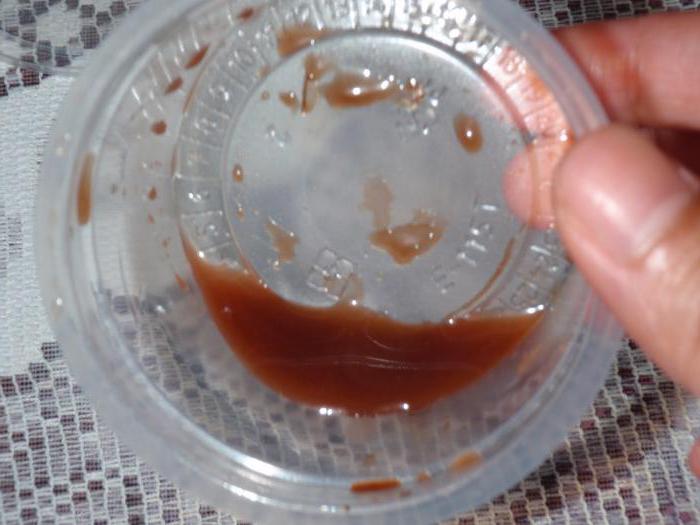
- An unpleasant smell emitted by the liquid. This may indicate the presence of inflammation and infection in the mammary glands. If the diagnosis is confirmed, then antibiotics can not do.
- Colostrum appeared in non-pregnant women.
If you are waiting for a baby, the discharge from the nipples of a clear or yellowish liquid is a normal, natural process. You should not apply to the mammary glands cabbage leaves, alcohol dressings and so on. Remember - so the body is preparing for the appearance of the baby and breastfeeding.
Properly care for the mammary glands
As we found out earlier, one of the most common occurrences in the 3rd trimester is colostrum in pregnant women. When a liquid appears, you need to adhere to some recommendations and rules:
- To observe hygiene. At least 2 times a day wash the mammary glands with warm water.
- To use only special underwear - bras for pregnant women are made from natural materials, they have no bones that would pinch the breast. It is important to choose the right size.
- It is not recommended to wash the nipples with soap, in order to avoid cracks. But the nourishing cream is allowed. Thus, you moisturize the skin and get rid of stretch marks.
- During this period, it is recommended to use a soft towel so as not to irritate the nipples.
- If the colostrum flows in large volumes and comes through the clothes, you can purchase special
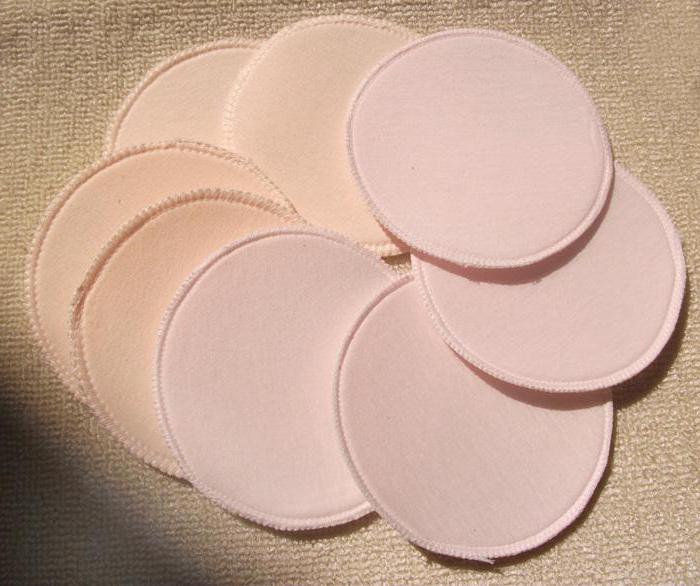
“When does colostrum occur in pregnant women?” Is a question that interests many women. Experienced doctors will help to deal with the nuances, but, as a rule, this happens after the onset